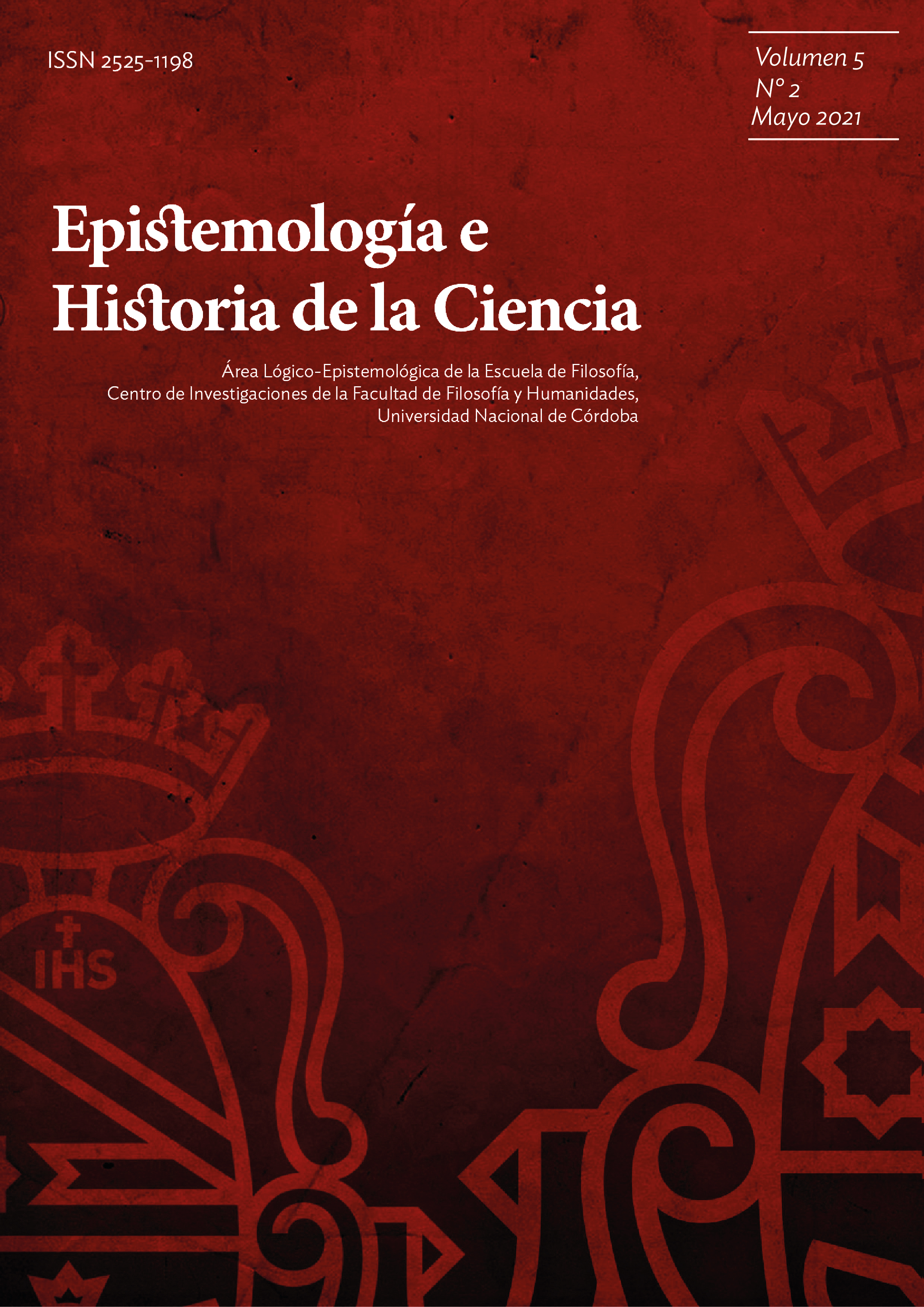Separación entre forma y función biológica
Consecuencias para la tesis de la contingencia radical
DOI:
https://doi.org/10.61377/ehc.32434Palabras clave:
contingencia, evolución, selección natural, funciones biológicasResumen
La tesis de la contingencia radical (TCR) plantea que las formas biológicas que han evolucionado son contingentes en el sentido en que son impredecibles, pues su evolución depende de la ocurrencia de otros estados evolutivos previos que, si bien llevaron a determinada forma biológica, podrían haber resultado en otra distinta. En este artículo se plantea una nueva versión de la contingencia evolutiva, entendida como la separación entre forma y función biológica. Existen elementos y evidencia suficientes para defender la idea de que la manera como opera la evolución por selección natural es tal que, dada la dependencia de una adaptación biológica del medio, se da una separación entre forma y función biológica. Esta concepción implica contingencia respecto a las distintas estrategias de los seres vivos para cumplir las distintas funciones, pero convergencia en las funciones biológicas generales, que se derivan incluso de los requerimientos para que se considere a un organismo como ‘vivo’. Este enfoque permite aclarar la naturaleza de la contingencia evolutiva, al mostrar que la convergencia o contingencia de un rasgo biológico depende de la determinación general o específica de sus características. Otra consecuencia importante del análisis es mostrar que, entendida así, la contingencia no puede ser radical.
Referencias
Allen, C. & Bekoff M. (1995). Biological function, adaptation, and natural design. Philosophy of Science, 62(4), pp. 609-622. https://www.jstor.org/stable/188555
Bartlett, S., & Wong, M. (2020). Defining lyfe in the universe: From three privileged functions to four pillars. Life, 10(4), 42. http://doi.org/10.3390/life10040042
Beatty, J. (2006). Replaying life's tape. The Journal of Philosophy, 103(7), 336-362. http://www.jstor.org/stable/20619950
Caponi, G. (2010). Análisis funcionales y explicaciones seleccionales en biología. Una crítica de la concepción etiológica del concepto de función. Ideas y Valores, 59(143), 51-72. https://revistas.unal.edu.co/index.php/idval/article/view/36654
Cummins, R. (1975). Functional analysis. The Journal of Philosophy, 72(20), 741-765. https://doi.org/10.2307/2024640
Darwin, C. R. (1872). The origin of species by means of natural selection, or the preservation of favoured races in the struggle for life (6th ed.). Londres: John Murray. http://darwin-online.org.uk/content/frameset?itemID=F391&viewtype=text&pageseq=1
Emerson, S. B. (2001). A macroevolutionary study of historical contingency in the fanged frogs of Southeast Asia. Biological Journal of the Linnean Society, 73(1), 139–151 https://doi.org/10.1111/j.1095-8312.2001.tb01352.x
Gould, S. J. (1989). Wonderful life: The Burgess Shale and the nature of history. New York: W. W Norton.
Gould S. J., & Vrba, E. S. (1982). Exaptation –a missing term in the science of form. Paleobiology, 8(1), 4-15. http://doi.org/10.1017/S0094837300004310
Griffiths, P. (1992). Adaptive explanation and the concept of a vestige. En P. Griffiths (Ed.), Trees of life: Essays in philosophy of biology (pp. 111-131). Londres: Springer.
Keijzer, F. A. (2017). Evolutionary convergence and biologically embodied cognition. Interface Focus, 7(3), 20160123. http://dx.doi.org/10.1098/rsfs.2016.0123
Losos, J. B., Jackman, T. R., Larson, A., de Queiroz, K., & Rodríguez-Schettino, L. (1998). Contingency and determinism in replicated adaptive radiations of island lizards. Science, 279(5359), 2115-2118. http://doi.org/10.1126/science.279.5359.2115
Neander, K. (1988) What does natural selection explain? Correction to Sober. Philosophy of Science, 55(3), 422-426. https://www.jstor.org/stable/187658
Neander, K. (1995). Pruning the tree of life, The British Journal for the Philosophy of Science, 46(1), 59- 80
Powell, R., & Mariscal, C. (2015). Convergent evolution as natural experiment: The tape of life reconsidered. Interface Focus, 5(6), 20150040. http://dx.doi.org/10.1098/rsfs.2015.0040
Rosenblum, E., Parent, C., & Brandt, E. (2014). The molecular basis of phenotypic convergence. Annual Review of Ecology, Evolution, and Systematics, 45, 203-226. https://doi.org/10.1146/annurev-ecolsys-120213-091851
Starr, T. N., Picton, L. K., & Thornton, J. W. (2017). Alternative evolutionary histories in the sequence space of an ancient protein. Nature 549, 409–413. https://doi.org/10.1038/nature23902
Sober, E. (1984). The nature of selection: Evolutionary theory in philosophical focus. Chicago: The University of Chicago Press.
Sober, E. (2000). Philosophy of biology (2nd Ed.). Routledge.
Solé, R., & Goodwin, B. (2000). Signs of life: How complexity pervades biology. New York: Basic Books.
Travisano, M., Vasi, F., & Lenski, R. E. (1995). Long-Term experimental evolution in Escherichia coli. III. Variation among the replicate populations in correlated responses to novel environments. Evolution, 49(1), 189-200. http://doi.org/10.1111/j.1558-5646.1995.tb05970.x
Yedid, G., Ofria, C. A., & Lenski, R. E. (2008). Historical and contingent factors affect re-evolution of a complex feature lost during mass extinction in communities of digital organisms. Journal of Evolutionary Bibliology, 21(5), 1335–1357. http://doi.org/10.1111/j.1420-9101.2008.01564.x
Wong, T. Y. W. (2019). The evolutionary contingency thesis and evolutionary idiosyncrasies. Biology & Philosophy, 34(22). https://doi.org/10.1007/s10539-019-9684-0
Wright, L. (1973). Functions. The Philosophical Review, 82(2), 139-68. https://doi.org/10.2307/2183766.
Descargas
Publicado
Número
Sección
Licencia
Derechos de autor 2021 Epistemología e Historia de la Ciencia

Esta obra está bajo una licencia internacional Creative Commons Atribución-NoComercial-SinDerivadas 4.0.
En todos los lugares donde aplique, esta obra está bajo una licencia Creative Commons Reconocimiento-NoComercial-SinObrasDerivadas 4.0 .
- Los autores/as conservarán sus derechos de autor y garantizarán a la revista el derecho de primera publicación de su obra, el cual estará simultáneamente sujeto a la Licencia de reconocimiento de Creative Commons que permite a terceros compartir la obra, siempre que se indique su autor y su primera publicación en esta revista.
- Los autores/as podrán adoptar otros acuerdos de licencia no exclusiva de distribución de la versión de la obra publicada (p. ej.: depositarla en un archivo digital institucional o publicarla en un volumen monográfico), siempre que se indique la publicación inicial en esta revista.
- Se permite y recomienda a los autores/as difundir su obra a través de Internet (p. ej.: en archivos digitales institucionales o en su página web) antes y durante el proceso de envío.
- Las licencias de las imágenes de terceros incluidas en los artículos pueden estar sujetas a otros términos; los autores/as son responsables de asegurar la veracidad de su origen, la información de la fuente original provista y su permiso de reproducción en esta publicación, que puede ser exclusivo.







